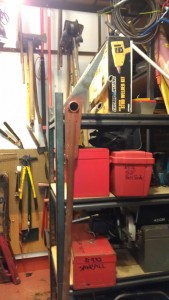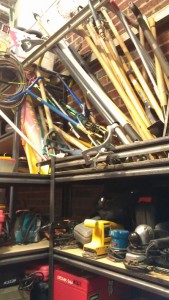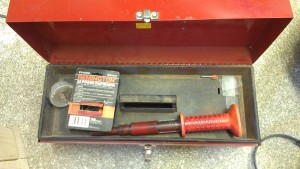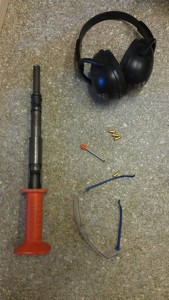Is it time to downsize?
It feels like a million years ago now, but the massive real estate crash of 2008 was only a few years ago. I saw the collapse up close and personal. Well before the crash, my wife and I bought a fairly large fixer, planning to move in once the bulk of the work was complete. Part-way through, we decided we hated the place and decided to complete the work and sell it. It’s what I call our inadvertent house flip.
Once we put it on the market, we had one (ONE!) interested buyer. No one else had really even given it a serious sniff. The housing market was cooling, but a total meltdown was yet to occur. But I could tell a bomb was about to go off. I just didn’t know how big the bomb was. My heart was racing nearly every day. Even as our buyers got squirrely, we did everything they asked, even suddenly replacing the furnace just days before closing. And we survived! With our asses intact. We didn’t lose any money but didn’t really make any either. All we lost in the end was a year of very hard work. We felt like winners as we watched the house’s Zillow rating drop by $200,000. That was late 2007. I think it was close to a year later that the stock market collapsed and all hell broke loose.
So that’s how I found myself sitting pretty when the big crash finally hit. I still owned a lot of real estate with rapidly declining value, but I had equity in everything and was cashflow-positive on the investment side. Plus I was working at a stable healthcare company. While the company was experiencing a brutal income drop as workers lost their insurance, it was getting through just fine. In fact, the crash may have helped that organization shake itself out of its complacency and begin running a much more lean operation.
Fear and debt
During that time, I talked to many of my coworkers about their finances. And they were SCARED. Scared shitless. One friend had decided to let the bank take his condo back after they announced massive assessments and he realized the value was never coming back. But most folks, many in their 40s and 50s, just had that blank stare of someone who is beyond panic. I had just two words of advice for them: Shed. Debt. These were good people, nurses and techs, who would wipe up your bodily fluids without thinking twice and give you a hug on your way out. Better people than I’ll ever be. They’d worked long, hard careers, but most of them had very little financial security.
That was when I realized just how much debt people were actually carrying. It was stressful for me just talking to them. Massive house payments, car payments, credit cards, school loans and on and on and on. I had just one good friend who was on track to having her house completely paid off and wasn’t even that worried after her husband was laid off. Good for her!
That’s not to imply that I wasn’t freaked out, though. I had three mortgages I was responsible for. Would have been four if I hadn’t unloaded that other home! I had to drop the rent price a few times and had a few periods of vacancies, but really it was not that big of a deal looking back. But, still, I was pretty spooked by the whole thing. That’s why I was so anxious to get mortgage-free as soon as possible and to reach financial independence as soon as possible.
Instead of reinvesting the cash from that home sale like we should have, (DAMNIT!) my wife and I decided to finally buy the house we really wanted, leaving my starter home behind. We also bought way too much house. Too much room, a nicer view than we really should justify given our financial goals and more yard than I can maintain.
That’s not to say we don’t love it. We love our neighbors. The house is wonderful. Our neighborhood cannot be beat. But it was probably well into 2010 before we realized how much this house is holding us back. So as we sit here in our beautiful cage contemplating our pretirement, we’re rethinking things. Hopefully many of you are as well. That fear that so many of us felt was driven by our over-inflated lifestyles. The good news is that we now have a chance to restructure things so we never feel that fear ever again.
Time to pop your own housing bubble?
It occurs to me that that the real estate market has largely recovered (at least here in Seattle), that it may be the right time for quite a few people to make strategic adjustments to their housing situations. Pop your own housing bubble, if you will.
Now on one hand, real estate appreciation could mean we’re in the perfect situation. Just ride up with the market, sell at the right time and be loaded! And that might be where we end up. Our neighborhood could very likely appreciate by 10% a year for the next few years. Don’t scoff, it’s true. Right now, houses are selling on their first day in my neighborhood and prices are rising rapidly.
On the other hand, depending on when a person purchased their home, they may already have significant equity but prices in general are still somewhat deflated, particularly if they were to move to another area. But more importantly, by downsizing, a family could move from being saddled with too much mortgage and back-breaking maintenance to a debt-free lifestyle with a fast-track plan to pretirement!
As always with real estate, whether this is possible for you depends on your situation.
Let’s say a family owes $400,000 on a house valued at $600,000 and are still paying on their original loan. They could dump the giant house, buy a still-very-nice $400,000 home and be paying on a mortgage of just $200,000. And with the low interest rates of today, they could enjoy an additional boost in their savings. And using my patented mortgage payoff acceleration plan, they could be mortgage-free in just a few years! Or they could rent awhile and put all of their equity toward their pretirement funds. That invested money could even generate enough income to pay a good chunk of their rent if they were so inclined. If the house can be rented to cover the mortgage or close to it, you could still pop your bubble by renting our your house and moving yourself to a cheaper place.
Can someone without a ton of equity also pop their housing bubble? Of course! Renting a fancy apartment way bigger than you need? Move! Only have a tiny bit of equity but know you bought too much house? Works for you too! You might want to wait a bit for the market to run up a bit more, but as soon as the timing looks right, sell it off and downsize!
The bottom line is that if you’re a normal American, you are living with way more than you NEED. By downsizing now, while you can, you may be able to greatly accelerate your pretirement. It’s time for a difficult conversation with yourself (and your spouse): How much do you REALLY love your house? I figure that by buying such a luxurious home cost us at least an extra TWO YEARS of working.
What will we do? I don’t know. We’re talking about it now. We’ll be here at least another year or so and then we’ll make the decision. We may rent a cheaper place for a time and pocket the difference (our current house could rent for quite a bit). We may even keep living here awhile. And, who knows, maybe we’ll change our minds and decide to take the hit and just live out our days here. It may be a cage, but it’s a damn nice one.
In the meantime, we’re getting this place ready to sell or rent. Even if we decide to stay here at least we’ll have all these projects done!
What about you? Are you thinking about popping your own housing bubble?










